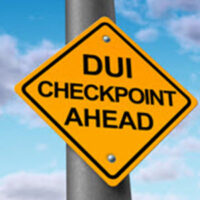Five DUI Checkpoint Requirements

Normally, the Fourth Amendment requires police officers to have reasonable suspicion of criminal activity before they can detain motorists. “Reasonable suspicion” is basically an evidence-based hunch. In this context, reasonable suspicion typically means a traffic violation, like speeding or failure to maintain a single lane. At that point, the DUI investigation begins with the dreaded “have you been drinking” question. But this provision does not apply to DUI checkpoints.
Incidentally, the Fifth Amendment gives motorists the right to refuse to answer such questions. Motorists need only comply with basic commands, such as “step out of the car” and “show me your drivers’ license.” These rights apply at DUI checkpoints as well.
Officers must do more than respect your rights at DUI roadblocks. These checkpoints must also meet some rigid legal requirements. If they fall short, a Tampa criminal defense attorney can leverage these shortcomings in court and favorably dispose of the case. This favorable disposition could be a complete dismissal of charges, a plea to a lesser-included offense, or a not-guilty verdict at trial.
Supervisor Level Setup
Only police supervisors can authorize sobriety checkpoints. Typically, a police chief or other person directly accountable to the public is a supervisor. A police captain might or might not be a supervisor, and lieutenants or sergeants are usually not supervisors. Officers definitely cannot set up ad hoc roadblocks on their own. In fact, officers can have no discretion at DUI roadblocks. Almost everything must go strictly by the book.
Pre-Checkpoint Publicity
Before officers set up DUI roadblocks, they must publicize the date, time, and location. This publicity must be enough to give motorists a chance to avoid the area altogether. So, although a full page ad in the New York Times is probably unnecessary, a tweet or post on the department’s Facebook page is probably insufficient.
On-Checkpoint Publicity
DUI roadblocks cannot be modified speed traps. Signs must clearly convey the nature of the roadblock (e.g. Sobriety Checkpoint Ahead) and also give instructions (e.g. Have Drivers’ License and Proof of Insurance Ready). These instructions are especially important because, as mentioned, motorists need not answer questions at the checkpoint. In fact, they need not even roll down their windows. They must only comply with basic commands.
Neutral Formula
In order to reduce detention times, as outlined below, it’s usually impossible to stop every vehicle. So, there must be a neutral formula, such as stopping every third car. Officers cannot randomly stop some cars and wave others through. If traffic backs up, officers can shift the formula to something like every fourth or fifth car.
Minimal Detention
There is no hard and fast rule here. But generally, if motorists wait more than about twenty seconds, that’s too long. This period includes the time waiting in line and the time at the checkpoint itself.
Work With a Dedicated Attorney
DUI checkpoints must follow certain rules. For a free consultation with an experienced Tampa DUI attorney, contact the OA Law Firm. After hours, virtual, and jail are available.




